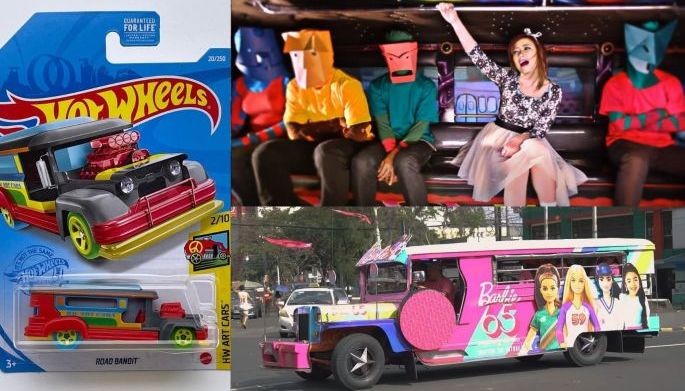MANILA, Philippines — Long have Filipinos talked about the cultural significance of jeepneys — from its daily use as a mode of transportation, to a piece of history that evolved through the years, and in some ways, as an artwork on its own.
Such discussions continue to circulate given the government's public utility vehicles (PUV) Modernization Program, which includes old jeepney units getting replaced by modern Euro-4 or electric engine PUVs that could cost up to P2.8 million each.
For all the benefits the new vehicles could bring, it's hard to imagine it matching or surpassing the cultural impact of the traditional jeepney, with various designs and aspects of pop culture and religion plastered around them.
On the flip side, pop culture paid tribute of sorts to jeepneys by incorporating them to further their everlasting presence in the zeitgeist.
The most popular examples that come to mind is music, with songs like Yeng Constantino's "Jeepney Love Story," Sponge Cola's "Jeepney," and Grin Department's "Miss U (Miss, Miss Sa Loob Ng Jeepney)" about budding relationships that built or ended with the memory of these vehicles.
The band Kala also has a song titled "Jeepney," which incorporates a jeepney ride into yearning for another individual, similarly does Nikki Gil's "Sakayan Ng Jeep," where it compares longing to waiting at a jeepney stop.
Then to humorous effect there's the ever-popular "Beep Beep Beep Ang Sabi Ng Jeep" by Willie Revillame, an iconic song in noontime variety shows and comical performances.
Older still are "Beep Beep" by Juan Dela Cruz Band and "Jeepney Driver Blues" by Noel Cabangon, which sings about the struggles and livelihoods of drivers.
The jeepney even made it into the international scene, sort of, when Korean rock band Wave to Earth shot its music video for "sunny days" in Pampanga, a chunk of it inside a jeepney.
Expectedly, jeepneys always appear in Filipino films in the background, rarely though as the center of attention like in 1985's "Ma'am May We Go Out?" starring Tito Sotto, Vic Sotto, and Joey de Leon; 2010's "Hating Kapatid" with Judy Ann Santos and Sarah Geronimo, or 2012's "Bourne Legacy," which had portions shot in the Philippines.
There have been visual media where jeepney drivers get the spotlight, sometimes as literal heroes like the 1987 Roderick Paulate movie "Binibining Tsuper-Man" and the GMA show "Tsuperhero" fronted by Derrick Monasterio.
A revered example of this is 1977's "Mababangong Bangungot," directed, produced, written, shot, edited, and starring National Artist Kidlat Tahimik about a jeepney driver who dreams of becoming an astronaut and finds himself journeying West.
Elsewhere on the pop culture spectrum, the jeepney even got its own Hot Wheels iteration when the Mattel's toy car line released the Road Bandit model in 2020.
Related: 'Barbie jeepney' celebrates doll's 65th anniversary with citywide donations
Mattel would bank on the vehicle again when it launched a Barbie Jeepney was used in the Philippines for the doll's 65th anniversary. The jeepney was used for giving out Barbie dolls and accessories to children.
Warner Bros. would use a similar promotional stunt for "Furiosa: A Mad Max Saga" using a wasteland version of the jeepney to give free rides.
Wherever our traditional jeepneys end up, their images are permanently etched on the screens and words that local and international artists weaved them into, a cultural legacy that will never be phased out.
RELATED: End of the road? Jeepneys face uncertain future






